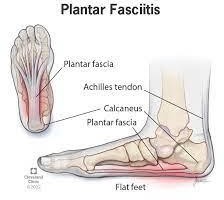A client is admitted to the hospital with a traumatic brain injury after his head violently struck a brick wall during a gang fight. Which finding is most important for the nurse to assess further?
A scalp laceration oozing blood.
Dizziness, nausea, and transient confusion.
Headache rated "8" on a 0-10 scale.
Serosanguineous nasal drainage.
The Correct Answer is D
Choice A rationale: This is a possible sign of TBI but is not necessarily indicative of a life- threatening condition.
Choice B rationale: This is a possible sign of TBI but is not necessarily indicative of a life- threatening condition.
Choice C rationale: This is a possible sign of TBI but is not necessarily indicative of a life- threatening condition.
Choice D rationale: Serosanguineous nasal drainage (a mixture of blood and clear fluid) may suggest a basilar skull fracture, which is a fracture of the base of the skull that can damage vital structures such as the brainstem, cranial nerves, or major blood vessels. This can lead to serious complications such as meningitis, cerebrospinal fluid leak, or hemorrhage.
Nursing Test Bank
Naxlex Comprehensive Predictor Exams
Related Questions
Correct Answer is D
Explanation
Choice A rationale: This is a possible sign of TBI but is not necessarily indicative of a life- threatening condition.
Choice B rationale: This is a possible sign of TBI but is not necessarily indicative of a life- threatening condition.
Choice C rationale: This is a possible sign of TBI but is not necessarily indicative of a life- threatening condition.
Choice D rationale: Serosanguineous nasal drainage (a mixture of blood and clear fluid) may suggest a basilar skull fracture, which is a fracture of the base of the skull that can damage vital structures such as the brainstem, cranial nerves, or major blood vessels. This can lead to serious complications such as meningitis, cerebrospinal fluid leak, or hemorrhage.
Correct Answer is A
Explanation
Choice A rationale: Plantar fasciitis typically presents with severe pain in the arch of the foot, especially during the first steps in the morning or after prolonged periods of rest.
Choice B rationale: Multiple toe deformities are not typically associated with plantar fasciitis.
Choice C rationale: Redness and severe swelling are not typical findings in plantar fasciitis.
Choice D rationale: Numbness and paresthesia are not common findings in plantar fasciitis.
 |
Whether you are a student looking to ace your exams or a practicing nurse seeking to enhance your expertise , our nursing education contents will empower you with the confidence and competence to make a difference in the lives of patients and become a respected leader in the healthcare field.
Visit Naxlex, invest in your future and unlock endless possibilities with our unparalleled nursing education contents today
Report Wrong Answer on the Current Question
Do you disagree with the answer? If yes, what is your expected answer? Explain.
Kindly be descriptive with the issue you are facing.
